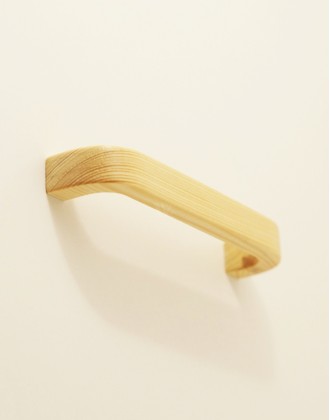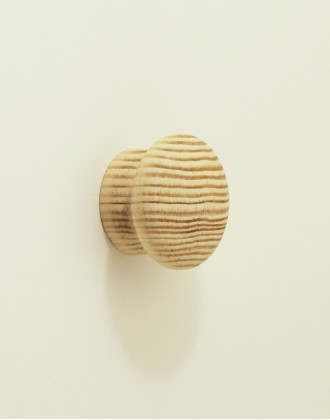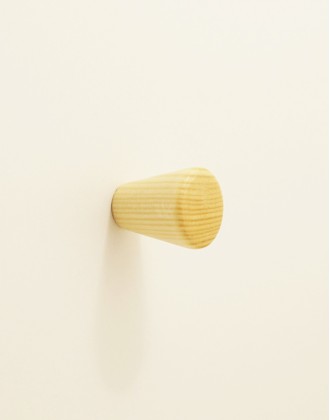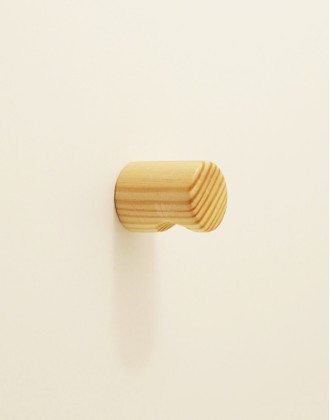Softwood
Softwood species like pine, spruce, and Douglas fir are commonly found in forests throughout North America, Europe, and other parts of the world. Here's a description of each:
Pine:
- Description: Pine trees are characterized by their straight trunks, conical shape, and needle-like leaves clustered in bundles. The needles typically come in bundles of 2 to 5.
- Wood Characteristics: Pine wood is lightweight, soft, and easy to work with. It has a pale yellow to light brown color with prominent grain patterns. Pine is known for its versatility and is used in a wide range of applications, including construction lumber, furniture, cabinetry, and woodworking projects.
Spruce:
- Description: Spruce trees are tall, straight trees with conical crowns. They have slender, cylindrical cones and needles that are attached individually to the branches. Spruce needles are usually sharp and square-shaped, and they tend to be shorter than those of pine trees.
- Wood Characteristics: Spruce wood is light in color, ranging from white to pale yellow, with a fine, even texture. It's relatively soft and lightweight but has good strength properties. Spruce is commonly used in construction for framing, sheathing, and other structural applications. It's also used for making musical instruments, paper, and pulp.
Douglas Fir:
- Description: Douglas fir trees are large, tall conifers with thick, scaly bark and a pyramidal shape. The needles are flat and soft to the touch, arranged spirally around the branches. Douglas fir cones are distinctive, with three-pointed bracts protruding from between the scales.
- Wood Characteristics: Douglas fir wood varies in color from reddish-brown to yellowish-white, with a pronounced grain pattern. It's moderately lightweight but strong and durable, making it suitable for a variety of structural and finishing applications. Douglas fir is commonly used in construction for framing, flooring, trim, and veneer. It's also used in boat building and furniture making.
These softwood species are widely used in construction, woodworking, and other industries due to their availability, workability, and desirable physical properties. Each species has its own unique characteristics and applications, but they all contribute to the diverse range of products made from softwood lumber.

Softwood species like pine, spruce, and Douglas fir are commonly found in forests throughout North America, Europe, and other parts of the world. Here's a description of each:
Pine:
- Description: Pine trees are characterized by their straight trunks, conical shape, and needle-like leaves clustered in bundles. The needles typically come in bundles of 2 to 5.
- Wood Characteristics: Pine wood is lightweight, soft, and easy to work with. It has a pale yellow to light brown color with prominent grain patterns. Pine is known for its versatility and is used in a wide range of applications, including construction lumber, furniture, cabinetry, and woodworking projects.
Spruce:
- Description: Spruce trees are tall, straight trees with conical crowns. They have slender, cylindrical cones and needles that are attached individually to the branches. Spruce needles are usually sharp and square-shaped, and they tend to be shorter than those of pine trees.
- Wood Characteristics: Spruce wood is light in color, ranging from white to pale yellow, with a fine, even texture. It's relatively soft and lightweight but has good strength properties. Spruce is commonly used in construction for framing, sheathing, and other structural applications. It's also used for making musical instruments, paper, and pulp.
Douglas Fir:
- Description: Douglas fir trees are large, tall conifers with thick, scaly bark and a pyramidal shape. The needles are flat and soft to the touch, arranged spirally around the branches. Douglas fir cones are distinctive, with three-pointed bracts protruding from between the scales.
- Wood Characteristics: Douglas fir wood varies in color from reddish-brown to yellowish-white, with a pronounced grain pattern. It's moderately lightweight but strong and durable, making it suitable for a variety of structural and finishing applications. Douglas fir is commonly used in construction for framing, flooring, trim, and veneer. It's also used in boat building and furniture making.
These softwood species are widely used in construction, woodworking, and other industries due to their availability, workability, and desirable physical properties. Each species has its own unique characteristics and applications, but they all contribute to the diverse range of products made from softwood lumber.
L128 Simple Clear Pine Handle
5½” Softwood Door & Drawer Bar
This satin lacquered pine wood handle embodies modern simplicity with its clean lines and minimalist design. Its rectangular profile and simple bow sh..
£7.08/unit Ex Tax: £5.90
Classic Unfinished Pine Knob
45mm Softwood Cabinet Pull
Solid wood door knob. Perfectly made on professional machinery with smooth sanded surface. Beautiful natural wood grain and colour. Supplied unfinishe..
£1.56/unit Ex Tax: £1.30
Cone Clear Pine Knob
25mm Wooden Furniture Pull
A cabinet door and drawer knob expertly fashioned from resilient pine wood, characterized by its light color and charming grain variations. The clear ..
£1.56/unit Ex Tax: £1.30
Roller Clear Pine Knob
23mm Wooden Furniture Pull
Experience the unmatched quality of our 100% real pine wood knob, finished with a luxurious satin lacquer. Designed in a sleek cylinder shape with a r..
£1.56/unit Ex Tax: £1.30





